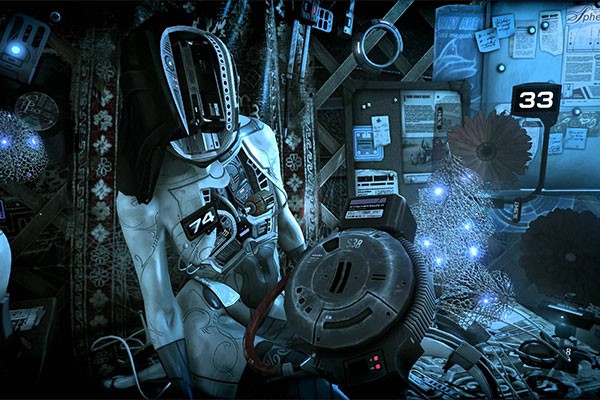Rating: A-
I have been waiting for Cradle to be released for a long time. It is an interesting narrative game that lived up to some of my expectations and fell short of others. It is proof that good writing, a dedicated art style, and a focus on atmosphere can be enough to make a game great. Less really is more.
Cradle is a short-form science fiction game that takes place in the middle of the plains of Mongolia. You awaken in a yurt with no memory, a non-functioning android woman named Ida sitting on your table, and the sole instruction that you need to make breakfast for Ongots. As it turns out, Ongots is your pet eagle, whose leather breastplate covers a hollow cavity containing a battery pack. It becomes clear at this point that the game is about transhumanism —in this case, digitising organic minds and placing them into machines—and the social stigma that stems from that.
It is easy to see that Cradle takes a large amount of inspiration from Myst, as its soporific atmosphere and craftsmanship mirror that of the Myst franchise. It is an understatement to say that the game is gorgeous. Every aspect of its aesthetic—its music, its sound design, its architecture, its colour palette, its animations of animals—has clearly been crafted with love and care. There is nothing stopping you from exploring all of it right from the start of the game: the Mongolian plains appear to stretch out forever, open for you to wander aimlessly (even though you won’t necessarily find anything).
When I first saw screenshots of Cradle’s world and character design, I was instantly hooked. Unfortunately, those screenshots showcased pretty much all of the game’s meagre content, leaving only plot-related surprises for me to discover. However, rather than make the game particularly large, the developers have focussed on the miniscule details of the game’s environment. You spend the majority of the game in and around your yurt, finding various parts to help Ida regain her memory and make sense of the world. Photographs, devices and decorations line the walls, and papers are strewn all over the floor – and ALL of them can be read. The yurt feels lived-in and lovely, while the rest of the game world feels desolate, steampunk and hauntingly beautiful.
Aside from your yurt, there are only three other locations in the game: a very small train station, a flower garden, and a very large dome surrounded by balloons. This dome looks like an amusement park of some kind—in fact, the protagonists initially think it is exactly this—but in reality it is a psychiatric facility for children with phobias of human bodies, including their own. The facility contains a number of interesting block puzzles that were apparently used to placate the children while they introduced them to the human form—except in your case, you take part in them to earn various items that Ida needs in order to function properly. At first, they seem out of place: it’s like trying to read an Isaac Asimov novel, but stopping every few pages to play a game of Tetris. But they fit within the context of the game’s plot, and they break up the scenic travelling just enough for the game to always be interesting and dreamlike.
Speaking of the plot, here is the only downside of the game: though the story is well-written, bits of it are non-believable and sometimes downright ridiculous. The game’s lore revolves around the idea that negative emotions in mechanical bodies—sometimes brought on by exposure to what the game refers to as “ugly people” —conjure small amounts of a chemical called passium, and if a mechanical body contains too much passium, then they explode. It is unscientific to say the least. Fortunately, the game’s narrative still has its own internal logic; but unfortunately, it has an abrupt, disappointing non-ending. Despite this, it is a tale of pain—especially the pain and fear of not recognizing one’s own body—that starkly contrasts against the beautiful environment. Your relationship with Ida is constantly interesting, as is her slow process towards remembering who she really is outside of being trapped in an android.
Cradle will be right up your alley if you’re a fan of speculative fiction. It’s gorgeous, relaxing, and thoroughly humanist, and it feels like a warm bed after a long day.



